The very concept of a terrarium is truly fascinating.
A contained, self-sustaining ecosystem? Wild.
And when you look a little deeper, you’ll find that terrariums have quite the interesting past, present, and future.
This post will take you through 8 interesting facts and stats (in a loosely chronological order).
So let’s do it.

Terrarium Tribe is reader-supported. When you purchase through links on our site, we may earn an affiliate commission (at no further cost to you). 💜
Terrarium Facts Overview (TLDR)
- Terrariums were invented by accident in 1829.
- Terrariums revolutionized industry.
- Terrariums were responsible for the Victorian Fern and Orchid hype.
- The term terrarium is Latin (and literal).
- The origin of the term terrarium is a mystery.
- The oldest terrarium was planted in 1960.
- Terrariums are increasing in popularity.
- The terrarium hobby is turning bioactive.
1 | Terrariums Were Invented by Accident in 1829
Victorian Britain certainly was an experimental place.
But when Dr. Nathaniel Bagshaw Ward (not a character from Bridgerton – but an actual person) placed a moth chrysalis into a glass bottle for observation, he was completely unaware that he was embarking on his own innovative discovery.
Turns out, a fern spore had made its way into the mix, and the sealed bottle had created just the right climate for it to germinate.
Thus, the terrarium was born. Or rather, the Wardian Case was born – as they were known back then, named after Dr. Ward himself.
👉 Read more: A Short History of Terrariums – The Happy Botanical Accident
2 | Terrariums Revolutionized Industry
In the 19th Century, terrariums weren’t considered a crafty DIY project to enjoy on a rainy afternoon but primarily an industrial tool and driver of globalization.
Previously, most living plants would perish on sea voyages, but terrariums made the mass transportation of live plants and crops across climates far easier.
So, it’s fair to say that this simple horticultural accident played a significant part in the Industrial Revolution.
But the introduction of the Wardian Case didn’t only drive the agricultural industry, it also inspired cultural trends too…
3 | Terrariums Were Responsible for the Victorian Fern & Orchid Hype
The historic British upper class absolutely loved to display their wealth. What better way to show off than by putting your imported exotic plants on your windowsill for the peasants to gawp at?
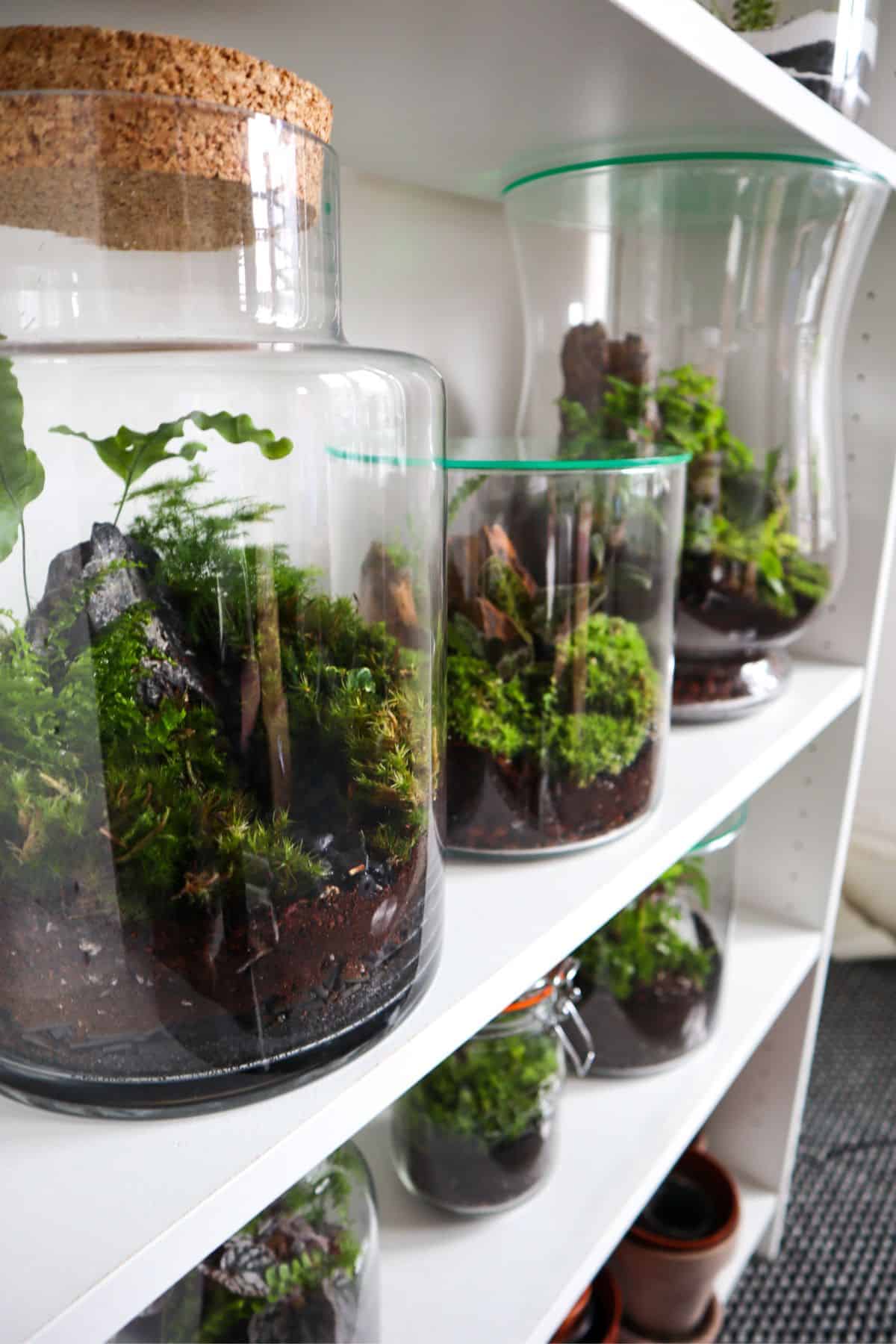
Thanks to terrariums, tropical plants and humidity-loving species became quite the collector’s item.
In fact, Victorian ladies were obsessed to the extent that it was practically a diagnosable malady.
I mean, if you can’t have an opinion, a job, or a vote, you’re going to need a hobby…
Perhaps one might suffer from Orchidelirium, where the most prevalent symptom is paying thousands of pounds for the latest extravagant Orchid at the Orchid auction (yes, really).
And a case of Fern Fever, known as Pteridomania, could be surprisingly deadly.
Young ladies would get all kinds of injuries in the pursuit of ferns, with one woman passing after falling from a cliff while out on a fern hunt.
4 | The Term Terrarium is Latin (and Literal)
To continue with our theme of posh English endeavors, let’s take a Latin lesson.
The prefix terra translates to earth, and the suffix arium translates to place.
So, terrarium literally means “earth place.” Proving once and for all that everything sounds better in another language.
5 | The Origin of the Term Terrarium is a Mystery
Pinning down where and when the word terrarium originated is a challenge.
In fact, Dr. Ward’s book published in 1842, “On the Growth of Plants in Closely Glazed Cases,” doesn’t mention the term terrarium or vivarium once.
When first introduced, they were known as Wardian Cases, and this is reflected by an increase in mentions of the term in literature.
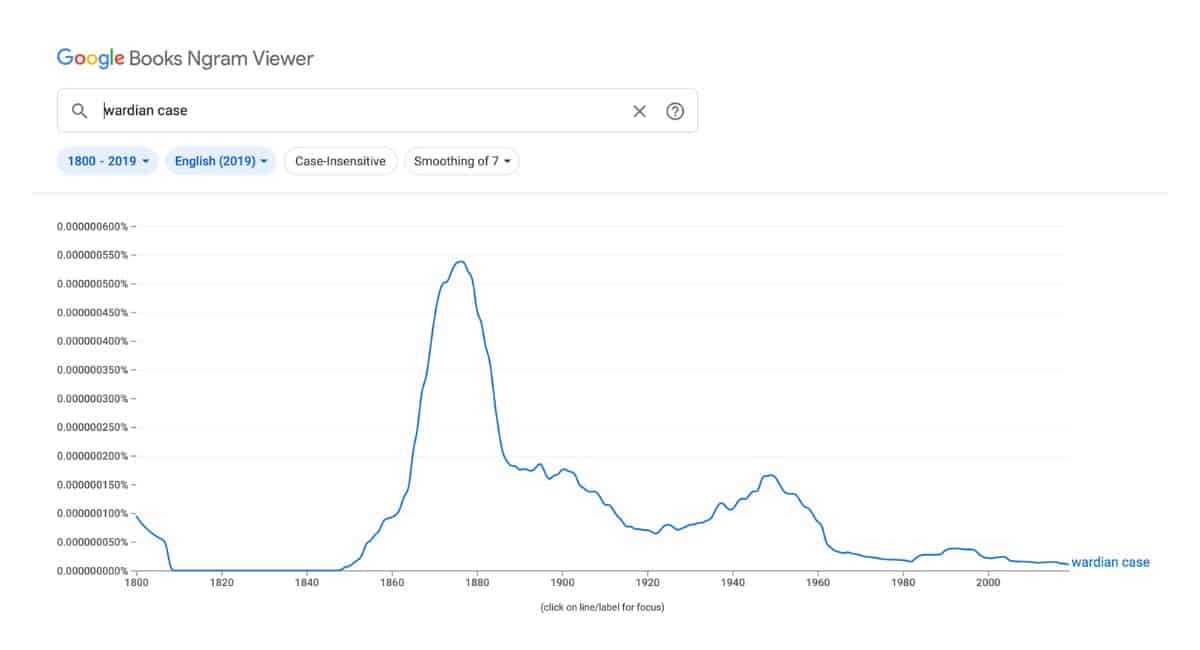
The term vivarium also increased around the same time, but the publications don’t seem to be talking about plants but about insects and marine life (“aquarium” took off at a similar time, too). It’s hard to know which idea came first, but I imagine insect vivariums came before Wardian Cases; after all, Dr. Ward started out with a moth in his glass case.
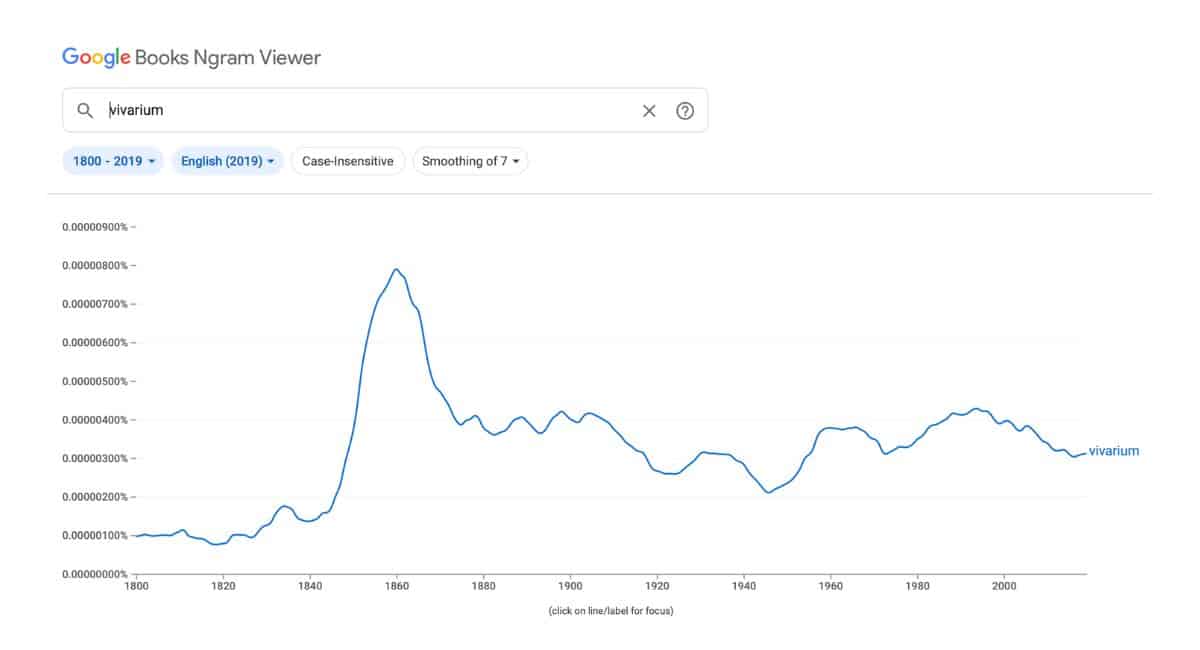
It isn’t until the turn of the century that we begin to see “terrarium” creep into literature. Interestingly, in the early days, it was almost exclusively in the context of school experiments and learning. The word follows the same pattern as vivarium and aquarium, but whoever first donned the term is unknown.
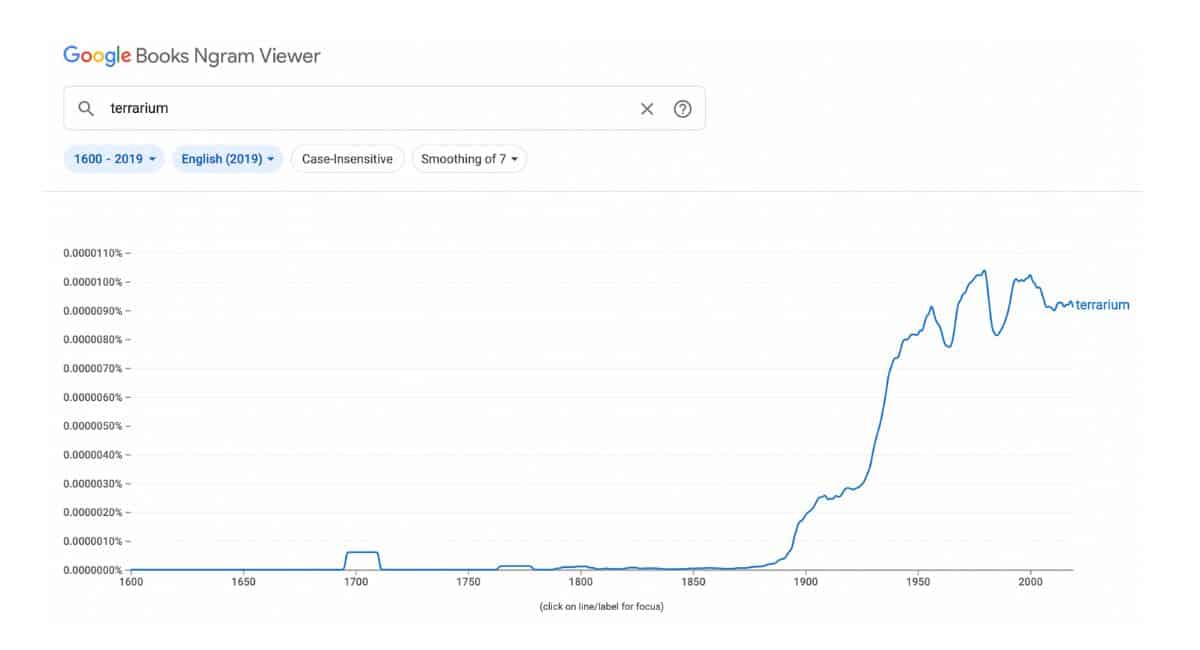
6 | The Oldest Terrarium was Planted in 1960
In 1960, David Latimer planted a 10-gallon glass carboy with a tradescantia/spiderwort, gave it a quarter pint of water, and sealed it up.
Then, in 1972, he opened the bottle garden (as terrariums were known back then), gave it a top-up of water, and sealed it once again.
It has remained untouched and thriving ever since.
But really, this is just the oldest known surviving terrarium, and I’d put my money on the fact that there will be older ones out there!
Here at Terrarium Tribe, we frequently get emails from people who’ve inherited their parents’ or grandparents’ living terrarium from the 60s and 70s and are anxious to care for it properly.
With the right setup, terrariums can last for decades without outside intervention.
7 | Terrariums are Increasing in Popularity
Check out this Google trends graph showing the interest in the search term “closed terrarium” between 2007 and 2022.
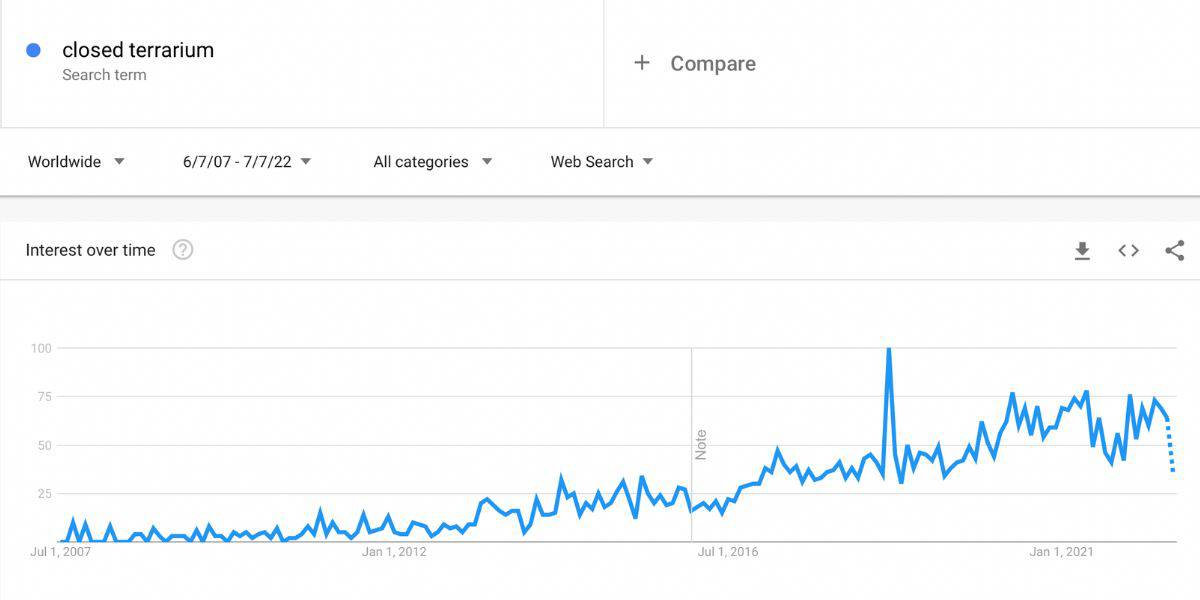
Of course, it’s impossible to draw any specifics from that graph, but the conclusion I’ve drawn is that over the last 15 years, there’s been a significant increase in people looking for terrarium information.
I’ve also had a look at several other search terms around the topic, and almost all are showing an upward trend.
Oh, and if you were wondering, the spike is explained by a company called Terrarium TV shutting down in late Summer 2018.
8 | The Terrarium Hobby is Turning Bioactive
As with any hobby, terrariums are evolving.
Gone are the days when you’d shove a few plants and a bit of dirt in a mason jar and hope for the best.
These days, everyone’s talking about how to make bioactive terrariums – which are terrariums that include detritivorous insects (that eat decaying matter).
This makes the terrarium far more self-sustaining than it would otherwise be.
And it is absolutely exploding – check out this Google trends graph.
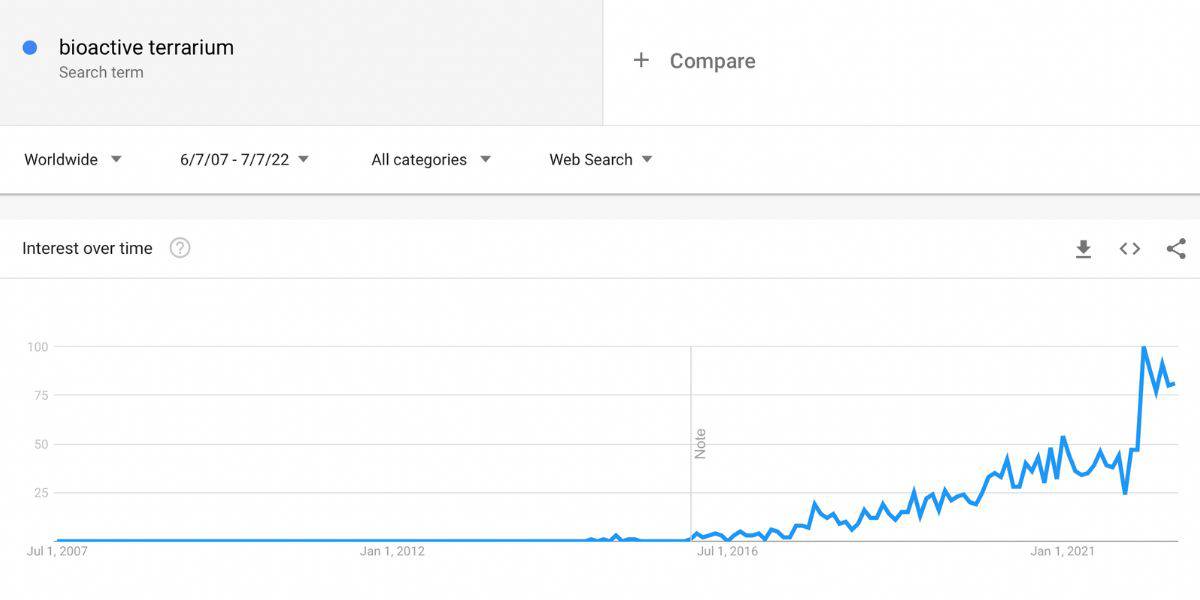
My personal opinion on what caused the massive spike in February 2022? Ben from Worcester Terrariums went viral on TikTok around that time with his brilliant “I put x fruit in a bioactive terrarium” series.
Have I Missed Anything?
What’s your favorite terrarium fact? Let me know in the comments. I’m always looking to find extra facts to add to the list!

Thank you very much for the information, I find it fascinating.